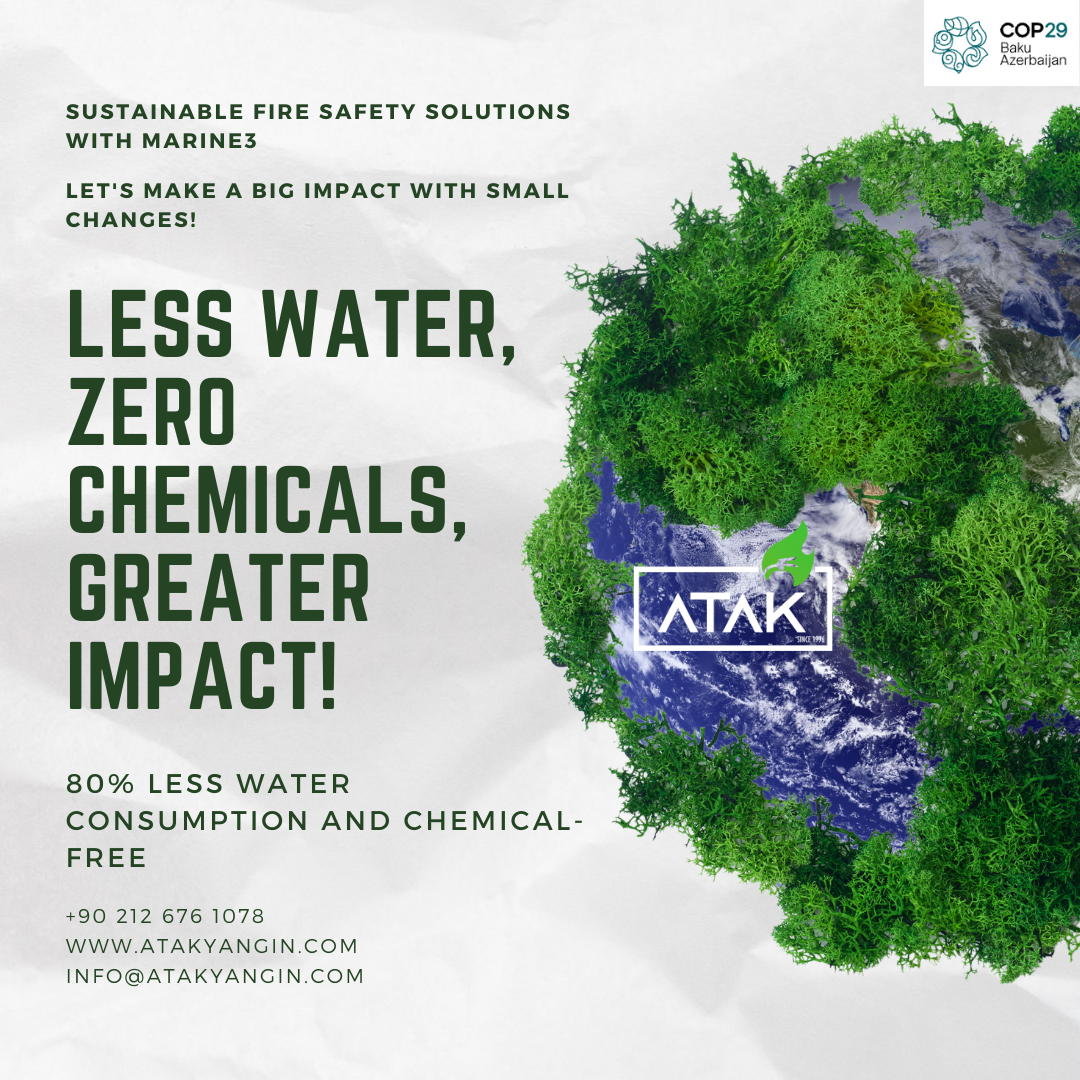
Global Decisions, Bans, and Recommendations on PFOA: Implications for the Fire Suppression Industry
PFOA and Its Characteristics
Perfluorooctanoic Acid (PFOA) is a synthetic chemical widely used in the production of fluoropolymers. Due to its persistence in the environment and harmful effects on human health, PFOA has been classified as a “Persistent Organic Pollutant” (POP). Its resistance to biodegradation causes it to accumulate in ecosystems, resulting in serious environmental and health concerns.
Environmental and Health Impacts
- Environmental Impact: PFOA accumulates in water and soil, contributing to widespread contamination.
- Human Health Risks: It has been associated with carcinogenicity, liver toxicity, immune system dysfunction, and adverse effects on reproductive health.
The fire suppression industry is a key sector where PFOA-based aqueous film-forming foam (AFFF) has been widely used. However, given its environmental harm, regulatory bodies around the world have introduced strict bans on its production and use.
International Initiatives and Agreements
The Stockholm Convention
In 2019, PFOA was added to the Stockholm Convention’s list of Persistent Organic Pollutants. This inclusion required signatory countries to prohibit the production, import, and use of PFOA-containing products.
- Reference: Stockholm Convention, Annex A
European Union Regulations
The European Union has banned PFOA through the REACH Regulation and the (EU) 2019/1021 POP Regulation, effective 2020. Limited exemptions were provided to allow industries to transition to alternatives.
United States Regulations
The U.S. Environmental Protection Agency (EPA) introduced the PFAS Action Plan to mitigate the environmental impacts of PFOA. In 2020, health-based advisory limits for PFOA levels in drinking water were established.
Other Countries
- Canada: Enacted a full ban on PFOA and its derivatives in 2020.
- Australia: Published a guideline in 2016 to phase out PFOA-containing foams.
- Japan: Prohibited the production and import of PFOA in 2019.
Turkey’s Regulations on PFOA and Transition Period
As a party to the Stockholm Convention, Turkey has taken significant steps to restrict the use of PFOA. On 15 April 2021, the Turkish Official Gazette published a regulation banning the production, import, use, and sale of PFOA and its derivatives.
Transition Period and Final Deadline
To ensure a smooth transition to compliant alternatives, the regulation provided a grace period until 4 July 2025, during which PFOA-based firefighting foams could still be used under specific conditions:
- Prohibition in Training and Testing:
- PFOA-containing foams cannot be used for training or testing purposes.
- Prevention of Emissions:
- As of 1 January 2023, these foams may only be used at facilities where emissions can be completely contained.
- Stock Management:
- PFOA-containing foam stocks must be managed and disposed of in compliance with relevant legislation.
- Reference: Official Gazette, 15 April 2021, Issue No: 31455
Consequences of Continued Use of Banned Substances
Despite the regulatory framework, continued use of PFOA-containing products beyond the legal deadlines may result in severe penalties:
- Administrative Fines:
- Significant monetary penalties may be imposed under Turkey’s Environmental Law.
- Operational Suspension:
- Non-compliant facilities may face suspension of operations.
- International Repercussions:
- Failure to comply with Stockholm Convention obligations could lead to international sanctions.
- Legal and Civil Liability:
- Companies may face lawsuits and be held liable for environmental damage caused by PFOA use.
- Reference: Environmental Law, Law No: 2872
Marine3: A Compliant and Sustainable Alternative
The ban on PFOA has necessitated the development of environmentally friendly alternatives in the fire suppression industry. In this context, Marine3 has emerged as a leading solution.
Marine3 is a high-performance firefighting foam that is free of PFOA and its derivatives. It fully complies with environmental regulations and offers an effective and sustainable alternative for the industry. Its innovative formulation supports a seamless transition to PFOA-free products while maintaining optimal fire suppression capabilities.

